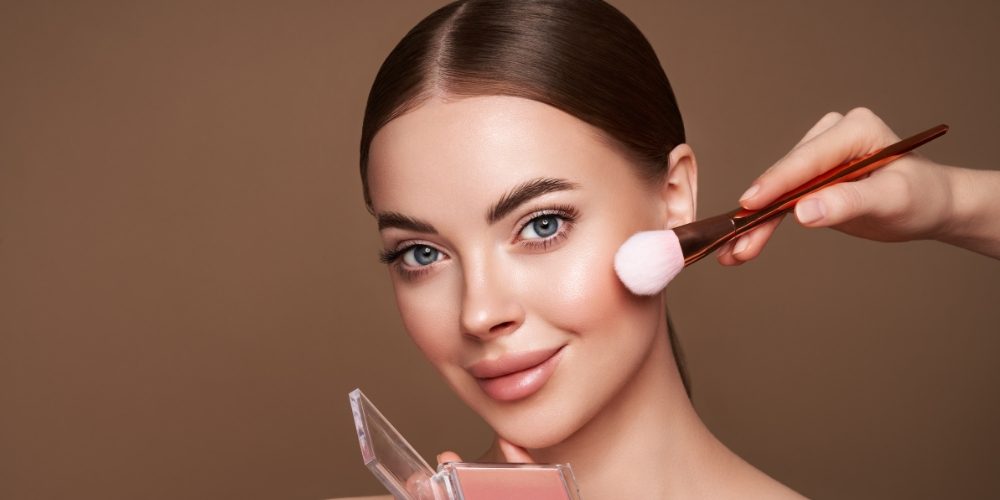Maintaining impeccable makeup brushes and tools surpasses being merely a good practice in the field of makeup artists, where creativity fuses effortlessly with technique; it emerges as a critical and non-negotiable component within your beauty regimen. This approach goes far beyond achieving perfectly blended makeup or beautifully sculpted cheekbones. It’s a pledge to your skin’s health, an expression of your passion for cosmetics excellence, and a formidable defense against the unseen enemies that thrive within neglected equipment. As we embark on this complete trip, we’ll not only discover the reasons for this routine, but also the crucial ‘what’ and the deft ‘how’ of caring for and protecting the integrity of your prized beauty tools. Through the following exploration, you’ll come to realize that each stroke of well-maintained bristles isn’t just a stroke of artistry but a stroke of care for your skin.
Understanding the Importance
Regular cleaning and sanitizing of makeup brushes and tools is an essential part of any beauty practice, with implications that extend beyond cosmetic aesthetics. Neglecting these key measures can present a slew of possible concerns that can jeopardize both your skin’s health and the results of your cosmetics application.
Brushes and instruments that amass leftover makeup, oil, and dead skin cells create breeding grounds for bacteria and germs over time. Using filthy makeup equipment can cause skin irritations ranging from redness and inflammation to more serious allergic reactions. Furthermore, bacteria buildup on brushes can aggravate acne breakouts, causing distress in people with sensitive or acne-prone skin.
In addition to skin concerns, the quality of your cosmetics application is at stake. Dirty brushes can impede product blending, resulting in streaky foundation, uneven eyeshadow, and jumbled contours. Because of the presence of residual products, the colors may not appear as vivid, and the intended precision of your application may be lost.
In essence, keeping your makeup brushes and tools clean is an investment in both the health of your skin and the artistic potential of your beauty undertakings. Cleaning and disinfecting your beauty instruments not only ensures a healthy canvas for makeup application, but also the longevity of your tools and the brilliance of your makeup artistry.
Gathering Your Supplies
Before we begin cleaning, let us gather our supplies:
- For gentle cleaning, use mild liquid soap or a specialized brush cleanser.
- Dish soap with antibacterial properties for harder residues.
- Olive or coconut oil for thorough washing.
- For sanitization, use rubbing alcohol or brush sanitizer.
- Disposable paper towels or clean towels.
- A shallow mixing bowl or cup for concocting solutions.
Cleaning Makeup Brushes
Begin by soaking the brush bristles in warm water. Remember that hot water can cause bristle damage and degrade the adhesive that holds them together.
- On your palm, dab a small amount of light liquid soap or brush cleaner.
- Swirl the brush gently in the soapy solution to create a lather.
- To prevent water from loosening the glue, thoroughly rinse the brushes while keeping the ferrule (the metal section) dry.
- Reshape the bristles gently to their natural shape.
- Allow the brushes to air dry by laying them flat on a clean towel. This keeps water out of the ferrule and away from the bristles.
Deep Cleaning
Deep cleaning brushes on a regular basis keeps them in good condition and ensures they operate properly. Take the following steps:
- Make an olive oil and mild soap solution.
- To remove stubborn oil-based makeup, swish the brush in the solution.
- Rinse and repeat the cleaning procedure mentioned above.
- Allow the brushes to thoroughly dry before reusing them.
Cleaning Makeup Sponges
Makeup sponges collect product residue and serve as a breeding ground for bacteria. This is how you clean them:
- Wet the sponge and lather it with antibacterial dish soap.
- Squeeze and lather the sponge gently, pushing the soap into the fabric.
- Under running water, rinse the sponge until the water runs clean.
- Squeeze out any excess water and allow the sponge to air dry thoroughly before using it again.
Sanitizing
Sanitizing your tools is essential to eliminate any lingering bacteria:
- In a container, combine equal parts water and rubbing alcohol.
- Brushes or non-absorbent implements (not sponges) should be dipped in the solution.
- Shake off any surplus liquid gently.
- Place the tools on a clean towel to air dry completely before reusing them.
Frequency of Cleaning
Do you know how often you should clean your tools? Following are some general guidelines:
- Brushes used on a daily basis: Every 1-2 weeks, clean.
- After 1-2 usage, clean brushes used with cream products.
- Sponges should be cleaned after each usage.
Maintaining Clean Brushes
After all that work, proper brush storage guarantees that your brushes remain pristine:
- Brushes should be stored in a dry, well-ventilated location.
- Maintain bristle shape and avoid distortion by keeping them upright or in brush holders.
- Brushes should not be stored in a closed container since moisture can accumulate.
Brush Replacement Indicators
Even while we adore our brushes, they have a limited lifespan. When you see the following, it’s time to say good-by:
- Bristles that are frayed and no longer keep their shape.
- Shedding in excess, indicating bristle damage.
- Even after cleaning, there is an awful odor.
Bonus Tips
Elevate your cleanliness game with these expert suggestions:
Handle Hygiene
Don’t forget about the handles! Wipe off the handles of your brushes and instruments on a regular basis to prevent the accumulation of product residue and oils. This preventative measure ensures that no hidden muck gets onto your hands or surfaces throughout your beauty regimen.
Water Conservation
When washing your brushes, take care around the ferrule—the point at which the bristles meet the handle. Excessive water exposure in this location can weaken the glue that holds the bristles in place, resulting in shedding and a reduced brush lifespan. Maintain the integrity of your instruments by keeping the water concentrated on the bristles.
Divvy Up Cream and Powder Brushes
Make separate brushes for cream and powder products. Using the same brush for both types of materials raises the possibility of cross-contamination and buildup, which can result in poor application quality. Clearly labeled containers or brush holders might assist you in keeping track of which brushes are assigned to certain products.
Sponges Weekly Refresh
Give your makeup sponges a weekly refresh to extend their life. To eliminate remaining product and bacteria, perform a brief rinse and gentle cleaning with mild soap. Regular maintenance ensures that your sponges continue to apply flawlessly.
Prolonged Brush Life
Pay attention to the drying process of your brushes to extend their lives. After cleaning, gently reshape the bristles to their natural shape with a clean towel and allow them to air dry entirely. Excessive heat from sources such as hair dryers can harm the bristles and reduce their performance over time.
Including these extra cleaning tips in your regimen improves not just the hygiene of your cosmetic equipment, but also their overall longevity and efficacy. By taking these extra precautions, you’re committing to both your skincare and makeup artistry initiatives.
Conclusion
And now that you have this full information, you have the ultimate key to unlocking the world of flawless makeup application and skincare. The benefits of sticking to a regular cleaning practice extend far beyond cosmetics quality; they are inextricably linked to your skin’s overall health. When you devote a small amount of time to the preservation of your prized tools, you start on a journey that promises not only flawlessly blended cosmetics but also a youthful face.
Finally, the essential relevance of keeping clean brushes and instruments extends far beyond the domain of makeup aesthetics. It demonstrates your dedication to healthy, vibrant skin and your understanding that beauty is more than skin deep—it’s a holistic blend of self-care, creativity, and wellbeing. Enjoy this cleansing procedure not as a means to a goal, but as a symbolic gesture that captures your passion to the art of feeling and looking your best. You’re not only improving your appearance with each spotless brush and thoroughly sanitized equipment; you’re transforming your entire cosmetics and skincare routine into an act of self-love. So, go ahead, let your tools shine as brightly as your radiant skin, because when your tools gleam, your inner beauty gleams too.
Thank you for joining us on this journey through Snap Blog, where stories come to life. We hope you enjoyed delving into the rich tapestry of human experiences, discovering moments that inspire, provoke thought, and foster connection. As you continue your exploration of our platform, we invite you to engage with us, share your insights, and be part of our vibrant storytelling community. Together, let’s unlock more moments and reveal the extraordinary stories that make life truly remarkable. Happy reading, and see you on the next adventure!
Disclaimer
The information provided is meant as a general guide. Individuals with specific skin sensitivities or product compatibility concerns should exercise caution and consult professionals as needed.
Share your cleaning routine and tips in the comments below. Let’s build a community of beauty enthusiasts dedicated to healthy skin and fabulous makeup!


